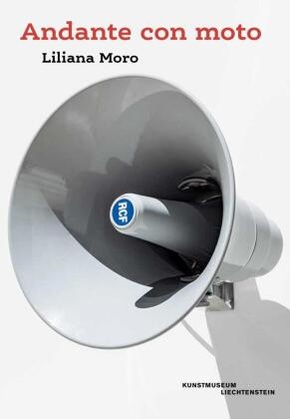
| Verlag | Distanz Verlag |
| Auflage | 2024 |
| Seiten | 160 |
| Format | 20,5 x 1,8 x 30,5 cm |
| Gewicht | 876 g |
| ISBN-10 | 3954766353 |
| ISBN-13 | 9783954766352 |
| Bestell-Nr | 95476635A |
Zuhören als gemeinsame Erfahrung
In ihrem künstlerischen Schaffen erforscht Liliana Moro (geb. 1961 in Mailand, Italien, lebt und arbeitet ebenda) unterschiedliche Ausdrucksmittel wie Klang, das gesprochene und geschriebene Wort, Skulptur, Performance, Zeichnung, Collage und Video. Ihre Werke stellen dabei ein fragiles Gleichgewicht zwischen scheinbar einfachen Materialien und Objekten her. Moros Werk ist bis heute von ihrer Leidenschaft für das Theater geprägt, wollte die Malerin doch ursprünglich Szenografie studieren. Die Auseinandersetzung mit Samuel Beckett, dessen Werk die Grundlage mehrerer ihrer Arbeiten bildet - Beckett befreite die Bühne von jeglichem Exzess und nutzte den Bühnenraum auch als skulpturales Element - verbindet Moro mit einem umfassenden Blick auf den Raum sowie auf Körper in diesem. Dabei gehen ihre Werke oft von alltäglichen Gegenständen und Situationen aus und fordern uns auf, zuzuhören und uns sowohl physisch als auch intellektuell in diesen Settings zu beteiligen.
Die Monografie Andante con moto. Liliana Moro spannt einen Bogen von Moros Arbeiten aus den späten 1980er-Jahren bis hin zu aktuellen Werken und Neuproduktionen für die titelgebende Ausstellung im Kunstmuseum Liechtenstein. Die Essays schrieben Milovan Farronato und Fabio Cherstich. Neben Transkripten und Aufzeichnungen zu Klangarbeiten umfasst das Buch ein Gespräch zwischen der Künstlerin und der Kuratorin Letizia Ragaglia, die auch das Vorwort schrieb.
Listening as a Shared Experience
Liliana Moro's (b. Milan, 1961; lives and works in Milan) creative practice explores a range of media including sound, spoken and written word, sculpture, performance, drawing, collage, and video. Her works strike a delicate balance between deceptively simple materials and objects. Moro's oeuvre has long been informed by her passion for the theater; the painter initially wanted to study scenography. Her ongoing engagement with the oeuvre of Samuel Beckett, which underlies several of her works-Beckett radically uncluttered the stage and activated the theatrical space as a sculptural element-goes hand in hand with an encompassing inquiry into the setting of art and the bodies in it. Often inspired by mundane objects and situations, Moro's work prompt us to listen and become both physically and intellectually involved.
The monograph Andante con moto. Liliana Moro traces an arc from Moro's works of the late 1980s to her most recent output and new works created for the exhibition of the same title at Kunstmuseum Liechtenstein. With essays by Milovan Farronato and Fabio Cherstich, transcripts and notes on sound works, and a conversation between the artist and the curator Letizia Ragaglia, who also wrote the foreword.
